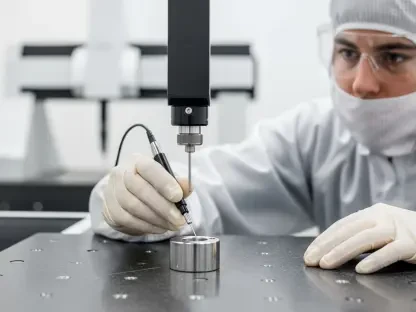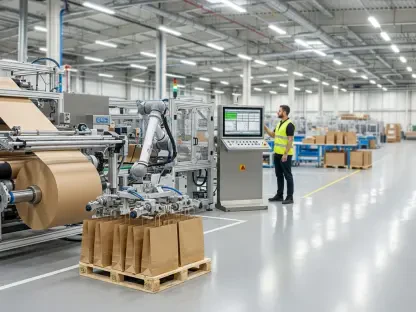The manufacturing of golf putters has evolved significantly, particularly with the integration of Computer-Aided Design (CAD) and Computer-Aided Manufacturing (CAM) technology, which has streamlined both the design and production stages. These advanced tools have not only transformed the way golf putters are developed but also ensured that high-quality standards, precise measurements, and safety protocols are strictly adhered to. By creating a digital environment that mirrors the actual manufacturing setup, CAD/CAM software has enabled manufacturers to simulate and optimize the entire production process before any actual machining takes place.
CAD/CAM software plays a pivotal role in creating the solid model of the golf putter, which is then prepared for machining. This software allows for seamless integration with other tools such as 3D printers, producing necessary components like soft jaws and other critical parts. One of the key innovations brought by CAD/CAM technology is the concept of the digital twin, a virtual replica of the CNC machine. This concept ensures that the machine operates accurately, minimizes errors, and enhances overall efficiency. By bridging the gap between the digital and physical realms, CAD/CAM technology has truly revolutionized the manufacturing landscape for golf putters.
The Role of CAD/CAM Software in Design
CAD/CAM software is essential in the initial design phase of a golf putter. This technology allows designers to create detailed and precise models that can be easily modified and optimized, offering a platform for experimenting with a variety of designs and materials. This ensures that the final product meets all the desired specifications and performs effectively on the golf course. The ability to tweak designs digitally before committing to physical prototypes saves both time and resources, reducing trial-and-error costs.
The integration of CAD/CAM software with other design tools enables a seamless transition from conceptual ideas to tangible products. Designers can simulate the entire manufacturing process, pinpointing potential issues and making necessary adjustments long before production begins. This not only accelerates the production timeline but also ensures that each golf putter is manufactured to perfection. With these digital tools, engineers and designers find themselves equipped to tackle complex design challenges, fostering innovation and pushing the boundaries of golf putter design.
Design for Manufacturing Principles
Implementing Design for Manufacturing (DFM) principles from the onset facilitates the production of high-quality parts while significantly reducing costs and waste. Simplifying part designs improves not only the product quality but also the assembly processes and overall sustainability. DFM ensures that the design is optimized for the manufacturing process, making it more straightforward to produce and assemble the golf putter. This approach minimizes complexity, which in turn reduces the likelihood of errors during the production phase.
By adhering to DFM principles, manufacturers can foresee and eliminate potential manufacturing issues early in the design phase. This leads to a more efficient and cost-effective production process, shielding the company from unexpected setbacks and additional expenses. Simplified designs also contribute to quicker assembly times and enhanced product reliability. Ultimately, DFM principles ensure that each stage of the manufacturing process is streamlined for optimal performance, paving the way for high-quality golf putters that meet stringent performance standards.
Simulation for Verification and Safety
Simulation software is crucial in verifying G-code before actual machining occurs. This step is essential in minimizing errors, detecting potential collisions, and ensuring that the machine kinematics are well-maintained. By creating a digital twin of the CNC machine, manufacturers can prevent costly mistakes and ensure a safe production environment. This virtual testing ground allows for making adjustments without incurring physical damages to the machinery or wasting materials on faulty designs.
The use of simulation tools enables thorough testing of the machining process within a controlled, virtual environment. This helps identify and address any issues that may arise during actual production, ensuring that the final product is manufactured accurately and safely. Moreover, the ability to simulate the entire process allows manufacturers to optimize parameters and settings, leading to significant improvements in efficiency and output. By relying on these advanced simulations, companies can achieve unparalleled precision in their manufacturing processes, ensuring that each golf putter meets the highest quality standards.
Probing for Precision
Probing software integrated within CAD/CAM systems ensures the precise location and measurement of parts on the CNC machine. This technology automates the work offset, thereby improving machining accuracy without the need for manual interventions that could introduce errors. Probing helps maintain consistency and quality in the manufactured parts, forming an essential part of the modern manufacturing process.
The use of probing software eliminates the need for time-consuming and error-prone manual measurements. By automating this aspect, manufacturers can achieve higher precision and consistency in their products, significantly reducing the margin for human error. This technology also shortens the setup and inspection times, paving the way for a more efficient production process. With probing software, manufacturers can ensure that each golf putter is crafted to exact specifications, greatly enhancing both quality and reliability.
In-Process Inspection
The safety aspect of in-process inspection cannot be overstated. By programming inspections within CAD/CAM software, operators can avoid hazardous manual checks, thus improving both safety and precision. In-process inspection ensures that any defects or issues are identified and addressed immediately, preventing further complications and potential product recalls.
In-process inspection tools integrated within CAD/CAM software allow for real-time monitoring of the manufacturing process. This ensures that any deviations from the desired specifications are swiftly corrected, maintaining the quality of the golf putter. By performing inspections during the manufacturing phase, the risk of producing defective parts is greatly minimized. This proactive approach not only enhances safety but also ensures that each golf putter adheres to the highest standards of precision and performance.
Machining and Deburring
The steps involved in machining complex parts like a golf putter are crucial to the final quality of the product. Processes such as facing, drilling, and contouring are thoroughly managed by CAD/CAM software. Deburring, which involves removing sharp edges from machined parts, is also an essential step as it mitigates potential injuries during handling and ensures the putter is safe for use.
CAD/CAM software streamlines the machining process by providing precise instructions for each step, ensuring that parts are machined accurately and efficiently. Deburring, often an overlooked but critical step, is necessary to guarantee the safety and usability of the final product. By automating these processes, manufacturers can achieve higher quality and consistency, delivering golf putters that meet and exceed the expectations of athletes and enthusiasts alike.
Streamlined Production Process
Adopting DFM principles and using simulation software to verify G-code before executing machining jobs result in streamlined production, reduced waste, and improved product quality. The integration of these technologies ensures a seamless manufacturing experience, facilitating the efficient transformation of design concepts into finished products.
The use of CAD/CAM software, in conjunction with DFM principles and simulation tools, leads to a more efficient and cost-effective production process. By identifying and addressing potential issues early in the design phase, manufacturers can significantly reduce waste and enhance the overall quality of the product. This streamlined approach ensures that the final golf putters meet desired specifications and are produced in a timely and cost-effective manner, setting the stage for competitive performance on the market.
Enhanced Safety and Accuracy
The production of golf putters has come a long way, thanks to the incorporation of Computer-Aided Design (CAD) and Computer-Aided Manufacturing (CAM) technologies. These advancements have streamlined both design and manufacturing, ensuring precise measurements, high-quality standards, and rigorous safety protocols. By creating a digital environment that replicates the actual production setup, CAD/CAM software allows manufacturers to simulate and optimize processes before any physical machining begins.
CAD/CAM software is crucial in developing the solid model of a golf putter, which is then prepared for machining. This software seamlessly integrates with other tools such as 3D printers to produce required components like soft jaws and other essential parts. One groundbreaking innovation from CAD/CAM technology is the digital twin, a virtual replica of the CNC machine. This ensures accurate machine operation, reduces errors, and improves overall efficiency. By bridging the digital and physical worlds, CAD/CAM technology has revolutionized the manufacturing of golf putters, making the process more efficient and precise than ever before.









